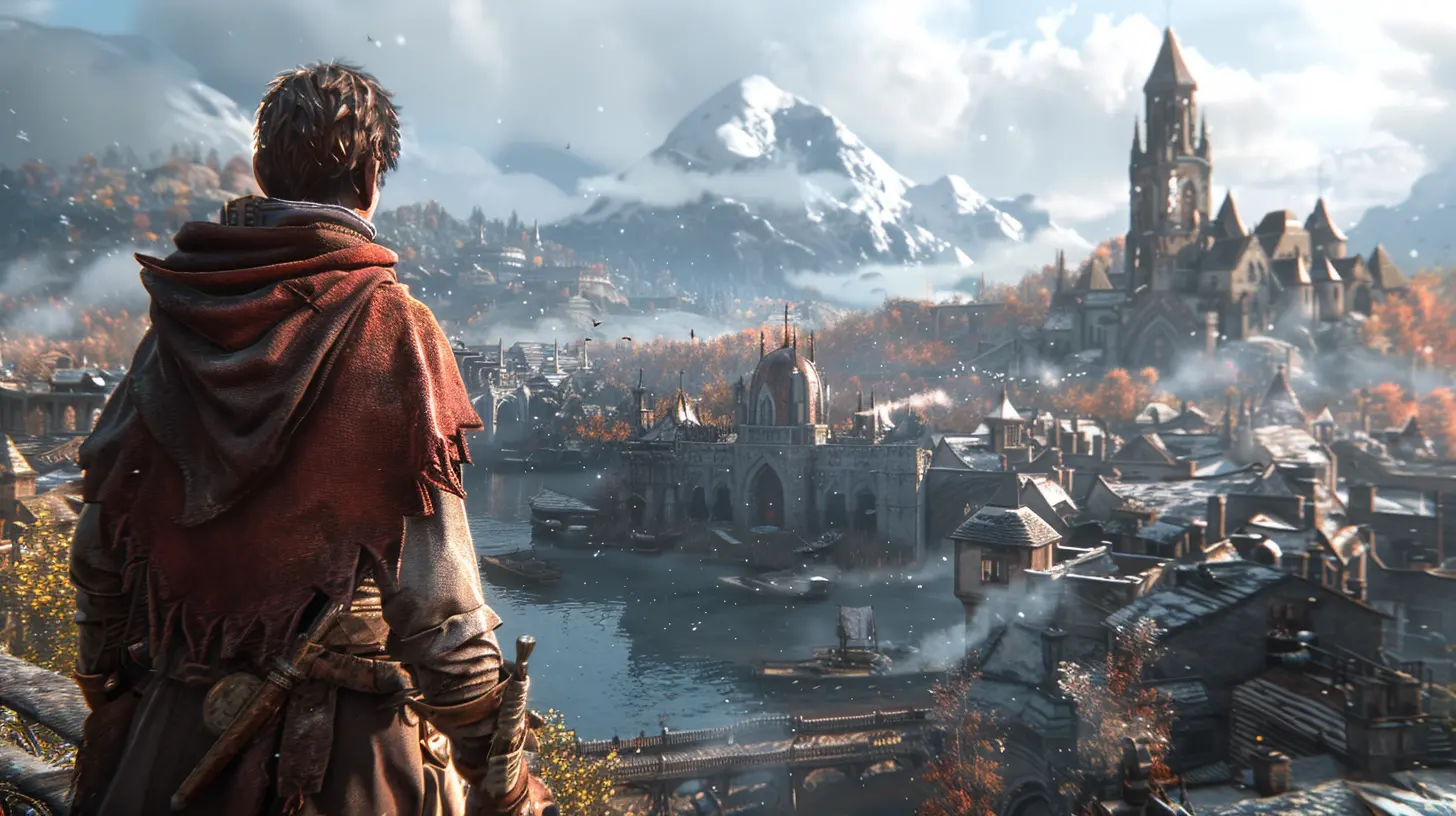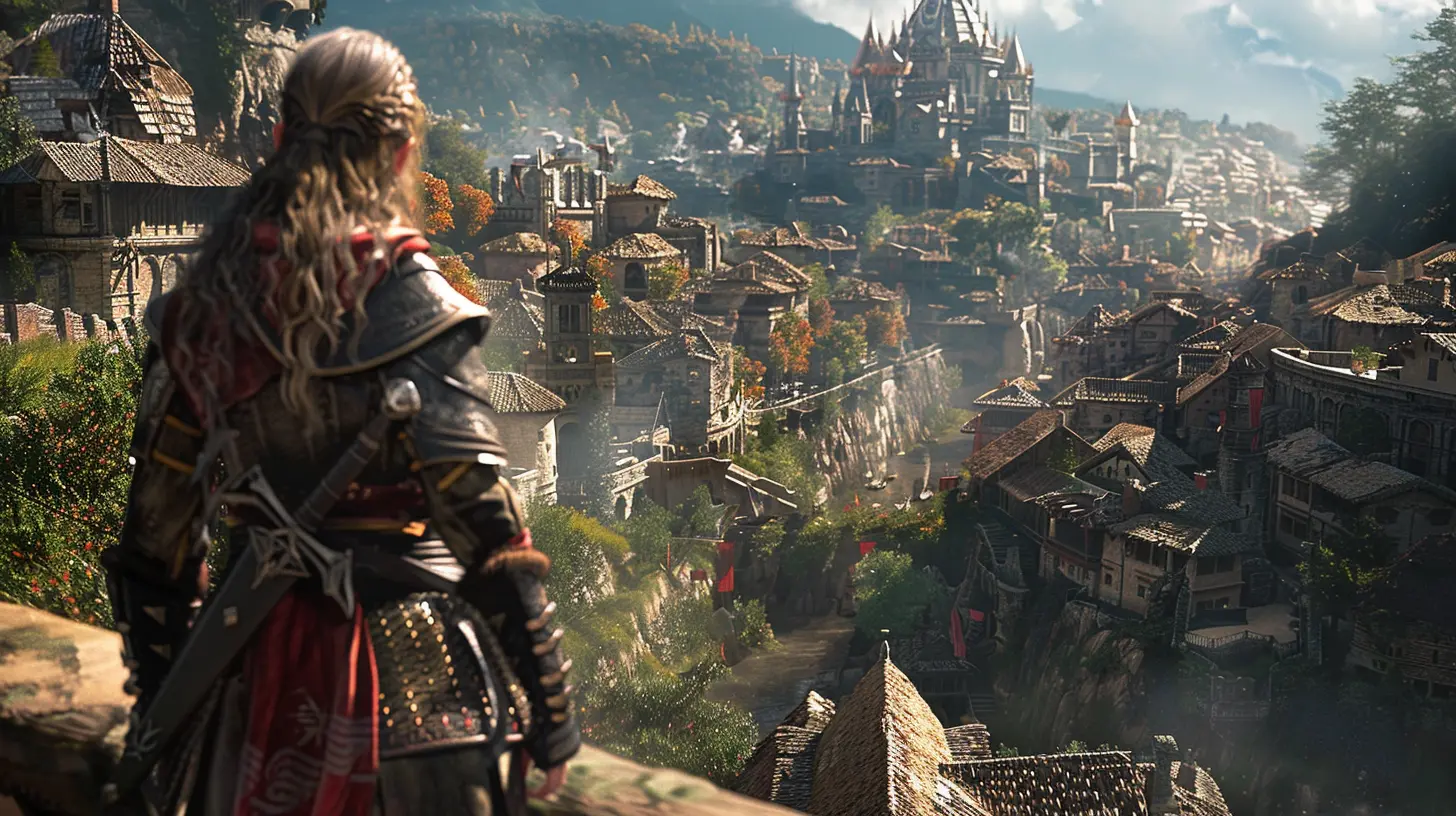Why Frame Rate and Visual Fidelity Go Hand in Hand
21 October 2025
If you've ever dived into the world of gaming—whether casually dropping into a battle royale or immersing yourself in a graphically-rich RPG—you've probably heard two terms thrown around a lot: frame rate and visual fidelity. These two performance pillars shape the way we experience video games, and more often than not, they’re tightly linked.
So, what's the actual connection between how smooth a game runs (frame rate) and how pretty it looks (visual fidelity)? Can we have both at max, or does one always get sacrificed for the other? Let’s unpack all of that in a super chill, gamer-friendly way.
What Is Frame Rate, Really?
Let’s start with the basics, shall we?Frame rate, measured in frames per second (FPS), is the number of individual images (frames) your screen displays every second. Imagine your favorite game as a flipbook animation. The faster you flip through the pages, the smoother the motion appears. That’s essentially what frame rate does—it makes everything look fluid and alive.
60 FPS is the golden standard for most gamers. It’s smooth, responsive, and just feels right. Go higher—like 120 or even 240 FPS—and you're in buttery heaven. Drop below 30, and you’re in stutter city, where every move feels like your game is dragging its feet through molasses.
Then What’s Visual Fidelity?
Visual fidelity is a fancy term for how jaw-droppingly real (or stylistically gorgeous) a game looks. Think of it as the game’s level of detail, textures, shadows, lighting effects, anti-aliasing, draw distances—you get the idea.You know that moment when sunlight breaks through a forest canopy and shimmers on a lake in a game? That’s high visual fidelity doing its magic.
It’s what makes modern games look like interactive art pieces. From the finely-rendered beard stubble on Kratos to the reflections in the puddles of Night City in Cyberpunk 2077, fidelity is what gives games visual depth and realism.
The Eternal Tug-of-War: Performance vs. Beauty
Here’s where the plot thickens.Pumping out jaw-dropping visuals is no small feat. It requires a ton of processing power. Your GPU (graphics card) is working like a mad scientist behind the scenes trying to render complex textures, lighting, and particle effects.
Now, if it's also being told, "Hey, we need 120 frames per second too!"—well, something's gotta give. Usually, if you crank up the visual settings, frame rate might take a hit. On the flip side, if you prioritize higher FPS, you might have to dial down some of those tasty visual elements.
It's kind of like trying to run a marathon while carrying a backpack filled with fancy art supplies. Sure, the supplies are cool, but they’re gonna slow you down.
Why They Actually Complement Each Other
Despite the trade-offs, frame rate and visual fidelity aren’t mortal enemies. In fact, when balanced properly, they can enhance each other in big ways.1. Immersion That Hits Different
Great visuals draw you into a game world. Fluid frame rates keep you there.Imagine you're sneaking through a dense jungle in a stealth game. The trees sway with the wind, shadows dance realistically, and the rain looks photorealistic. If your game is staring back at you in a choppy 20 FPS, all that immersion crumbles. It feels sluggish and fake. But if you're running at a high frame rate, those visuals come alive in a natural, believable way.
So, fidelity sets the stage, and frame rate makes it feel alive.
2. Responsiveness and Realism Hand in Hand
Especially in fast-paced games like first-person shooters or racers, every millisecond counts. High FPS means quicker response times—your actions sync naturally with what’s on screen. Pair that with clear visuals, and you've got the edge.Imagine spotting an enemy peeking from behind cover. With low fidelity, they might blend in with the environment. With high fidelity, you clearly spot movement. Now add high FPS—you aim and shoot in a split second. That combo? Game-changing.
3. Consistency = Comfort
One thing gamers hate? Janky, inconsistent experiences.If your frame rate keeps fluctuating because your GPU is struggling to keep up with the ultra settings, that’s not enjoyable. Smooth, consistent frame rates help maintain visual fidelity by preventing screen tearing, stuttering, and dropped frames. It’s better to slightly lower your settings to get that constant 60 FPS than to have a game that looks like a masterpiece… but plays like a slideshow.
Can Next-Gen Hardware Handle Both?
We're seeing massive leaps with current-gen consoles and GPUs. Thanks to smart tech like dynamic resolution scaling, DLSS (Deep Learning Super Sampling), and FSR (FidelityFX Super Resolution), it’s getting easier to have your cake and eat it too.These technologies let your system render a game at a lower resolution and then upscale it in real-time, preserving the visual quality while freeing up resources to boost FPS. It’s like watching a movie in HD while only needing the bandwidth for standard def—sleek, right?
So yes, next-gen hardware is bridging the gap more and more. But there's still a ceiling, and developers often have to choose between prioritizing visuals or performance… or offering options for both.
The Case for Customization
Most modern games let you pick between different modes: "Quality Mode" (higher visual fidelity with lower FPS) or "Performance Mode" (higher FPS but trimmed-down visuals).And honestly? That’s awesome.
It puts the power in your hands. Want to soak in the atmosphere of a story-heavy adventure game like Red Dead Redemption 2? Go for fidelity mode. Jumping into competitive Apex Legends? Performance mode all the way.
Customization empowers us to tailor our experience. And that balance—however you prefer it—shows how frame rate and visual fidelity are meant to complement, not conflict.
When Graphics Aren’t Everything
Let’s take a moment to acknowledge something important: great games don’t need to melt your GPU.Think of legendary titles like Minecraft or Stardew Valley. These games don’t rely on realistic visuals. Instead, they use stylized art and run buttery-smooth to focus on gameplay.
For these games, visual fidelity doesn’t mean realism—it means clarity and charm. Frame rate then becomes even more crucial to keep things moving and feeling tight.
So while fidelity and frame rate often go hand in hand, it’s not always about how “real” something looks. It's about how complete the experience feels.
Frame Rate vs. Visual Fidelity—Who Wins?
Neither. And both.It’s not a battle; it’s a partnership. When they work together, you get magic. Think of frame rate as the heartbeat of a game—it keeps the experience alive. Visual fidelity is the skin and face—it gives it identity and uniqueness.
One without the other can still be enjoyable, but when they align? You get that moment of gaming nirvana. That “Wow, this is smooth AND stunning” moment that keeps us coming back for more.
Quick Tips for Gamers Wanting the Best of Both Worlds
Alright, so let’s say you’re chasing that sweet spot. Here’s a few personal tips from one gamer to another:- Tweak Your Settings: Don’t just go “Ultra” everything. Adjust shadows, anti-aliasing, and post-processing. You’d be surprised how much juice you can save without hurting visuals.
- Update Your Drivers: Old GPU drivers can bottleneck performance. Keep them fresh.
- Use Presets Wisely: Games often have presets like Low, Medium, High, Ultra. Start with “High” and work your way up or down.
- Enable Adaptive Sync (G-SYNC or FreeSync): Eliminates screen tearing and smooths out gameplay.
- Experiment with Resolution Scaling: Lowering internal render resolution but displaying at native res can give you a big performance boost with minor visual loss.
- Monitor Your FPS: Tools like RivaTuner or built-in game counters let you see how your changes affect performance in real-time.
The Final Word
In the end, it’s all about what feels right to you. Some gamers swear by 4K at 30 FPS, soaking in every visual detail. Others want that lightning-fast 144 FPS, even if it means turning textures down a notch.What matters is the experience. Games are about fun, immersion, and connection—not just numbers. But understanding how frame rate and visual fidelity support and enhance each other? That knowledge helps you make smarter choices, whether you're building a new rig, adjusting your settings, or picking between Quality and Performance mode on your console.
At the end of the day, frame rate and visual fidelity aren’t rivals—they’re teammates. And when they sync up? That’s when the magic truly happens.
all images in this post were generated using AI tools
Category:
Game GraphicsAuthor:

Pascal Jennings
Discussion
rate this article
1 comments
Azriel Hall
Great insights! It's fascinating how frame rate and visual fidelity influence each other. I wonder how emerging technologies will further enhance this relationship in future games. Excited to see where game developers take us next!
October 25, 2025 at 3:18 AM

Pascal Jennings
Thank you! It's an exciting time in gaming, and I can't wait to see how new technologies will push the boundaries of frame rate and visual fidelity even further.


